Scott Hamilton – 26 June, 2017
All of Siasau’s new paintings are completely black, and all feature truncated geometric patterns embedded in squares or lozenges. We recognise the patterns because Siasau has varied the intensity of his black. The ngatu is called Mateaki, which translates as ‘loyalty’ or ‘fidelity’. In the promotional leaflet issued by Oedipus Rex, Siasau has emphasised his interest in the idea of a void, and used the neologism Va Va Tapu, or Vast-Sacred, to describe the realm that his new paintings point towards.
In 1940 Maori Marsden was initiated into Te Wananga o Tai Tokerau, one of the last traditional schools of learning in Aotearoa. Marsden was sixteen, but his father had died and his six older brothers were fighting Hitler. Maori already spoke for his absent whanau on the marae of the far north, and the wananga’s tohunga had decided that it was time for him to imbibe the esoteric knowledge of his ancestors.
In classes held at the back of wharenui and in bush clearings, Maori Marsden learned that the world he knew - te ao marama, the world of light - was only one aspect of reality, and that it depended for its survival on Te Po, the realm of darkness, and on Te Korekore, a place of chaos and potential that was both close to and distant from the objects and beings of Aotearoa. In an essay he wrote decades later, Marsden tried to describe Te Korekore:
Te Korekore is the realm of non-being and being…It is here that the seed-stuff of the universe and all created things gestate. It is the womb from which all things proceed…
Marsden quotes an old chant, and translates it:
From the realm of Te Korekore the root cause, through the night of unseeing, the night of hesitant exploration, night of blind groping, night inclined towards the day and emergence into the broad light of day.
Te Korekore is, Marsden explained, a sort of fertile void, which allows the things of the world to manifest themselves. Other Polynesian peoples had their own words for the strange domain Marsden described. In Tonga, the term ‘Uli’uli va, which translates roughly as vast blackness, has been used to describe the realm from which the tangible world emerges, and which sustains the tangible world.
Marsden was one of the last generation of students at Te Wananga o Tai Tokerau. By the 1940s few tohunga were left to teach, and few young people wanted to learn. In 1958 the school closed.
The notion of Te Korekore may have been receding into obscurity in Aotearoa, but in the wananga of Europe a very similar idea was fascinating young intellectuals. Before the war the German theologian-turned-philosopher Martin Heidegger had claimed that the ‘question of Being’ had gone unasked for two and a half thousand years in the West. Heidegger complained that, ever since the time of Plato and Socrates, philosophers had confused Being with beings. Instead of wondering why and how anything at all existed, they had either taken existence for granted or appealed to some super-entity - Plato’s Forms, or the Christian God, or a scientific equation - to explain it. Heidegger insisted that Being was something different to ordinary beings, something close to and yet separate from the world.
Heidegger’s collaboration with Nazism led to his postwar disgrace. Banned from teaching, he retreated to a mountain in the Black Forest and wrote a series of cryptic texts that were decoded and debated in the cafes of Paris and Vienna by young existentialists like Jean-Paul Sartre and Albert Camus. By 1970s the novels and essays and lectures of Sartre and his friends had spread the influence of existentialism around the globe, and the reviewers and literary critics of the South Pacific were finding their ideas in the stories of a young Samoan called Albert Wendt. Wendt may have read the existentialists, but he also knew, like Maori Marsden, of the roles that notions of a void and a place of pure Being played in pre-Christian Polynesian culture.
In Wendt’s great novella, Flying Fox in a Freedom Tree, the fields of black lava that extend towards the sea on the island of Savai’i become a metaphor for what the tohunga of Te Wananga o Tai Tokerau called Te Korekore. One of the heroes of Flying Fox makes an expedition to the lava fields:
You travel for miles through forest and so many villages where people have ruined the beauty, and then…And then It is there. You feel you are right in it at last. Get me? Like you are there where the peace lies, where all the dirty little places and lies and monuments we make to ourselves mean nothing because lava can be nothing but lava…Just black silence like the moon maybe…But in some places you see small plants growing through the cracks in the lava, like funny stories breaking through your stony mind.
At OREXART Visesio Siasau is showing eight painted canvases and an enormous ngatu, or barkcloth painting. ‘Uli ‘i he ‘Uli - Black on Black is Siasau’s first solo exhibition since he won the Wallace Award in 2015. The ngatu was painted in New York; the canvases were conceived in New York and birthed in a Hamilton garage.
All of Siasau’s new paintings are completely black, and all feature truncated geometric patterns embedded in squares or lozenges. We recognise the patterns because Siasau has varied the intensity of his black. The canvases are numbered in Tongan, from Taha (One) to Valu (Eight). The ngatu is called Mateaki, which translates as ‘loyalty’ or ‘fidelity’. In the promotional leaflet issued by Oedipus Rex, Siasau has emphasised his interest in the idea of a void, and used the neologism Va Va Tapu, or Vast-Sacred, to describe the realm that his new paintings point towards.
The New Zealand Herald‘s Dionne Christian has likened Siasau’s new paintings to black mirrors. If we ‘look at them long enough’, she says, we can see ‘something twitch from within the glass’. Black on Black - Ono is one of the paintings that seems to twitch eerily. It features a lozenge floating in a pure black void. We can make out the lozenge against the void because Siasau has given it four strips of olive-black paint. The strips are interspersed with areas of pure black paint, so that the lozenge seems about to disappear into the void.
Siasau won the Wallace Award with an epic series of barkcloth paintings that juxtaposed sacred and profane and Christian and autochthonous images. He branded Sisu (Jesus) with a dollar sign, and showed the pre-Christian goddess Hikule’o poking a forked tongue in defiance as she stomped on crosses. Siasau had earlier exhibited a series of similarly provocative sculptures: one showed the pagan god Tangaloa suffering on a cross; another put Jesus and Mary on a chessboard opposite their ancient Polynesian rivals.
Why, given the success of his figurative work, has Siasau now made these severely abstract paintings? I think an answer to this question must refer to the trouble Siasau has had since he won the Wallace Award. His victory was publicised in Tonga as well as Nu’u Sila: newspapers, magazines, and television shows reproduced his images and relayed his words.
When Siasau talked with journalists, he told them that he came from a family of artisans - carpenters, carvers, boatbuilders, barkcloth painters - and that he had spent his life studying not only the techniques of Tongan art, but also the knowledge that was once attached to these techniques. He explained that in ancient Tonga religion and art were indissolubly connected. The gods were stern and impatient patrons of all painters and carvers, and the beating and drying of barkcloth or the carving of a war club might involve incantations and propitiations. Siasau explained how knowledge about the land and the sea and the human body was kept in stories and songs about Hikule’o and Tangaloa and their companions.
When King Tupou I converted to Christianity he tried to exterminate the old gods. His army smashed and burned icons, and ran pigs through temples. But when gods die, Siasau would tell interviewers, a worldview and a lifeway expires with them. Using the texts of historians and anthropologists and the storerooms of museums, Siasau has worked to recover the knowledge of his ancestors, and to reanimate their gods.
But because modern Tongan identity is tied to Christianity, and presupposes a forgetting of much of the pagan past, Siasau’s mission has estranged him from some of his people. When he exhibited his first ngatu at Nuku’alofa’s ‘Atenisi Institute in 2013, his own mother came to look. She was saddened by what she saw. ‘I put you on a bike’ she told her son, ‘and now you have fallen off it’. For Visesio’s mother and some other members of his family, the images he had put on barkcloth were a betrayal. The Wallace Award and the publicity it inspired made Siasau a target for more Tongans.
During his stay in New York in 2016 Siasau visited some of the Pacific deities who have found refuge in the city’s museums. Maia Nuku, a curator at the Metropolitan Museum of Art, showed Siasau two carved goddesses - a large figure cut from dark, almost black wood, and a small sculpture made from pink ivory. Siasau commemorated the meeting with a post on facebook:
Alas our ‘OTUA TONGA-GOD you are confined and put away. You have been denied and removed from the space of humanity but not from our heart, blood, and DNA…
Siasau also encountered some of the great artefacts of twentieth century America culture in New York. He studied the canvases of Mark Rothko excitedly, and also discovered the black paintings of Ad Reinhardt. Siasau was fascinated by the way Reinhardt hid shapes deep beneath layers of black paint, and by the way that these shapes can float to the surface of his compositions, if only audiences look hard and long enough.
With his new exhibition Siasau seems to be trying to get both further away from and closer to Tonga. On the one hand, he has abandoned the images that once bound him, however uncomfortably, to his homeland, and adopted a style that might seem to owe more to New York than to the South Pacific. (Not even the geometric patterns in Siasau’s new paintings link him to the Friendly Islands: with their straight, truncated lines they would be more likely to turn up on the ceiling of a mosque or in an Escher woodcut than on ngatu.)
On the other hand, Siasau’s new paintings are an attempt to remind his viewers of ‘Uli ‘uli va, the void that was pivotal to pre-Christian Tongan understandings of the universe.
Like Maori Marsden’s Te Korekore and Heidegger’s Being, ‘Uli ‘uli va is paradoxical. It allows beings to exist, but it does not exist in the way that a being exists. If we try too hard to describe it, in paint or in words, then it recedes.
Heidegger argued that the best artists were able to evoke Being by creating conflict between ‘earth’ - that is, the primordial reality that lies beneath our everyday lives - and ‘world’, which he defined as the reality we make with our conventions and categories. Heidegger praised Paul Cezanne’s paintings of Mount Saint Victoire, which hover between figuration and abstraction, structure and fertile chaos, and thus remind us of the mystery that lies beyond reality.
In Visesio Siasau’s new paintings, ‘earth’ resists ‘world’ almost successfully. Only a few flickering forms emerge from the primordial chaos. Siasau wants to show us the ‘world’ of art emerging from the ‘earth’ of ‘Ulu’uli va, and to remind his audience of the pagan void that is a precondition for all beings and objects. The outrageous images may have gone, for the time being at least, but Siasau’s challenge to Christianity continues.
Scott Hamilton
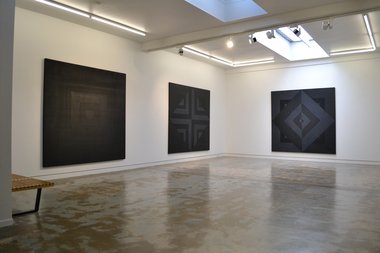
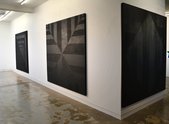


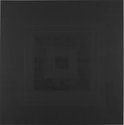
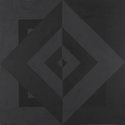

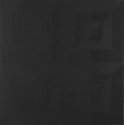
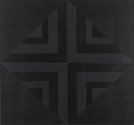
 Two Rooms presents a program of residencies and projects
Two Rooms presents a program of residencies and projects Advertising in this column
Advertising in this column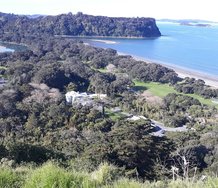
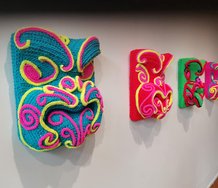

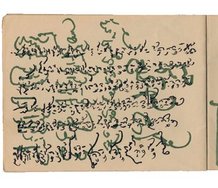
This Discussion has 0 comments.
Comment
Participate
Register to Participate.
Sign in
Sign in to an existing account.